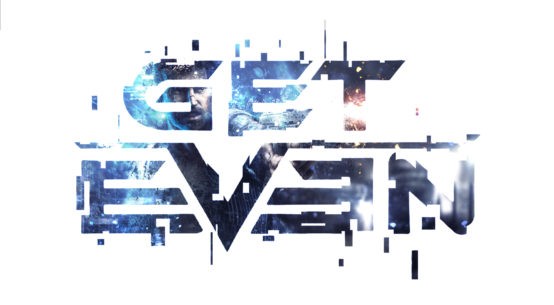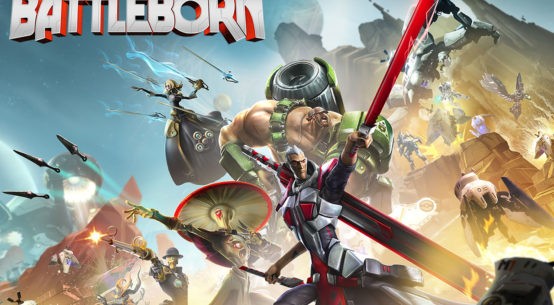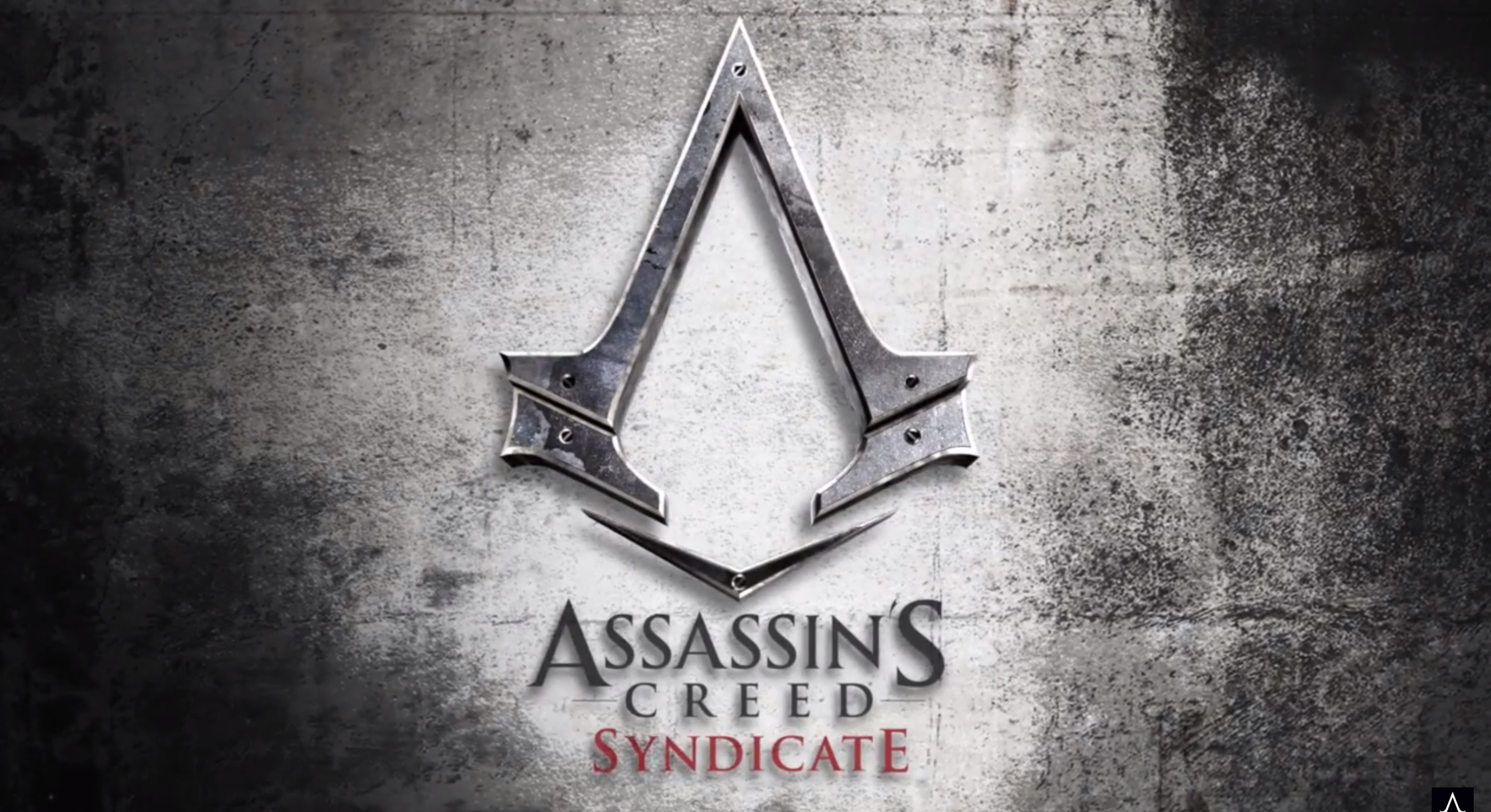

Sam Hughes speaks to Audio Director, Lydia Andrew about her career so far and her work on Assassin’s Creed: Syndicate. Lydia is an Audio Director who has worked in game audio for 14 years and in the entertainment industry for nearly 20.
She started her games career with Electronic Arts in the UK, working on a diverse range of titles from F1, beat matching and quiz games to Battlefield and Harry Potter.
Then in 2012 she joined Ubisoft Entertainment at the Annecy studio in France as Audio director on Assassins Creed Multiplayer and is currently the Audio Director for Ubisoft’s Quebec City studio.
Thank you so much for your time Lydia, we’re big fans of the Assassin’s Creed titles and we’re very excited to chat to you about the audio for Assassin’s Creed: Syndicate!
Before we talk about the game, tell us about your history in game audio and how you made the journey to where you are now?
I have had quite a long journey into game audio. I started out working on location as a sound assistant, boom operator, cable person and then moved into location sound recording.
After doing this for a few years, I became very interested in what happened to the sound I was recording once I handed it to the sound editors, so I decided to look into sound post production. I attended the NFTS, where I studied audio post production, which lead me into film and television post production.
My entry into Game Audio came through a contact at the NFTS. One of my tutors was asked if he knew anyone who might be interested in working in games and I went for a meeting and, subsequently, an interview with Electronic Arts in the UK.
I started off as a Senior Sound Designer, moved into being a lead and then became an Audio Director. Now I work as the Audio Director for Ubisoft’s studio in Quebec City.
Since joining the games industry 14 years ago, I have worked on a wide variety of projects. This is one of the things I love about the game industry, there are a lot of different kind of projects on many different platforms.
Are there any big pitfalls that people considering game audio as a career should avoid?
I’m not sure that I would say there are any big pit falls. One thing that I try to encourage is fresh thinking. Just because something has been done a certain way before doesn’t mean it’s the only way of doing it. We have to continue to ask questions, to challenge ourselves so that we don’t become complacent about the accepted ways of doing things.
I would frame the answer to this question as, “what should people consider doing?” For me the most important thing to do is to be an active and critical listener. Think about and experience all kinds of audio in all kinds of contexts; music, film, TV, installations, out in the world, etc, but, if you are going to focus on game audio, then you have to play games and be a critic.
Don’t just play one kind of game or games on one kind of platform. Watch videos of game play, read interviews or forums talking about game audio.
Play and think about how you are feeling, what you are experiencing. Try to analyze the sound.
What decisions did the sound people make and why do you think they made those decisions?
How did they put the sound together, what did they put in the foreground, and what did they put into the back ground?
How are you feeling? Is the audio making you feel something, does this enhance your experience or detract from it?
Compare different games in the same genres. Or different iterations of the same game. We often play games as a group and then break them down and talk about them, as sound can have a very different effect on different people. We like to compare our thoughts, our reactions and how we might have approached the same scenario in a different way.
Do you have a “Number 1” piece of advice to progress in a career in game audio?
There are many different paths into game audio and many different skills needed in game audio. As some teams only have one audio person or a very small audio team, being flexible is important. Try to develop skills and interests in several areas. For example, can you edit music and also create SFX? Can you work in both sound creation and sound implementation?
Having flexibility allows people to work on many different projects and with a range of teams – this can be really important in games.
At this point in game development, there are also interesting opportunities for people at the beginnings of theirs careers. You don’t need a big team to make a game. Various mobile games, Apps and smaller online games, can be made with a really small team and this can be a great way of getting experience.
Creative projects, but made quickly. The game jam idea, where ideas are tested, iterated on and produced in a short time frame, can be a great learning tool for beginners and also for experienced game developers.

Right, now onto Assassin’s Creed: Syndicate. Such a massive game, where do you even begin with the audio? What’s the first, you see of the game?
London in the Industrial Revolution is a very rich location for sound and one that needed a lot of research. At the beginning of the creative process for Assassins Creed Syndicate, we talked about the story, the settings, the characters and the era.
We talked about the sound from a sonically creative point of view and also a technically creative point of view, as it’s very important to talk about not only what you want to do but also how you will achieve it when working in games.
Along with the rest of the game team, we talked about what was important in this era and what we felt we wanted to focus on in the game. Then members of the sound team took on different areas of the audio and started to research them, using books, the internet, sound libraries, music archives, brain storming and discussion.
We throw a very wide net at the beginning, as you never know where a good idea or piece of information will come from and then we start selecting and narrowing down our topics, so we can research them in more depth.
We really like seeing the work the concept artists come up with for the locations and for the characters – this is often very inspiring.
The audio team works very closely with many other disciplines and these conversations are also very important. Conversations about the AI, the animation, the navigation, the world, player feedback and the missions – how audio will effect these areas and how these areas will affect the audio.
Fantastic, it’s great to hear how much detail you go into with the rest of the game design team. I’d love to hear more about the work on the vehicles. How did you recreate all the carriages, trains, boats etc.?
Assassins Creed Syndicate has a completely new vehicle system. Previous AC’s had horses and carriages in them, but the industrial revolution brings us into the age of mass transportation and of steam power.
We have a large number of horses and carriages with a lot of variation in carriage type. There are also steam trains running constantly around the city, including, for the first time, a moving player hub on a special steam train.
Plus, we have the river with its steam boats, paddle steamers and barges. This was a great opportunity for the audio team to create a new sound scape for Assassins Creed.
We split the responsibility for the audio between different teams.
For example, Ubisoft Singapore worked on all the boats for the Thames River, Ubisoft Annecy were responsible for the player Hub: The special steam train, and Ubisoft Quebec City with help from Ubisoft Montpellier, did live recordings, looked after the systemic steam trains and the horses and carriages.
Everyone started by looking for reference material, sound recordings, videos, films, written descriptions. This helped us to get the correct historical context, and to understand the difference in the mechanical construction between a Landau Carriage and a Growler, or between the different parts of a Steam engine or a steam boat.
This also helped us to make the technical design for the audio, which is the basis for any kind of systemic sound design. We needed to decide what kinds of sound we wanted to hear, what we want the player to experience, what the layers were, and therefore how we needed to construct and implement these assets to work in a totally systemic way.

Considering how a train sounds when you are standing on the roof in comparison to hanging off the side near the wheels, how the different types of open wagon will sound, how the train reacts to cornering, going up and down inclines, and stopping in stations are just some of the building blocks we are considering.
Trying to work on multiple different vehicle types without a strong systemic approach would make the project almost impossible to complete. You need to know that the sound will react correctly in any different situation, that it will work over time and that the differences between different vehicles and AI vehicles in different situations are as clear as possible for the player.
After looking at the reference material available, creating some placeholder assets, and testing our technical design, we knew that we wanted to do our own recordings and find more recorded material to really give the player a great mixture of historical accuracy, gameplay feedback and fun.
This meant finding out where it was possible to record steam trains and boats from the period and horses and carriages. We also talked to other sound people within Ubisoft to see if they had heard of any new recordings available in libraries.
Recording new sounds not only gives us fresh material to work with and the chance to plan out what we really need from the recording sessions, it also gives us the chance to check our research and adapt our creative and technical sound design.
Once you are recording the train you see exactly how it is constructed and working and this gives you more ideas about how to use the sound and what extra elements you need.
We did several recording sessions around the world.
Carriages, horses, and trains were recorded in France, Ubisoft Montpellier. Annecy got together to do train recordings so that Annecy had unique sounds for the player train, whilst Quebec City focused on the creating and implementing the systemic trains.
Ubisoft Singapore went to Australia to record authentic period steam boats and then implemented all of this sound.
The horses and carriages were a mixture of the new recordings done by Ubisoft in France and we licensed a brand new library of carriage recordings that was in the process of being put together. One of our senior sound designers here in Ubisoft Quebec, Steve, focused on editing and implementing all the sounds to create this incredibly rich experience of driving around this crowded Victorian city.
Did the project involve a lot of location recording?
The majority of location recording we did was for the vehicles as I have talked about above.
When you are recreating the sounds of a city like London, it’s a challenge to do location recordings in the modern locations as there is so much noise pollution from cars etc. So we built most of the ambiences through sound designer and layering rather than from contemporary recordings in London
There were key sounds we wanted to take from the city, for example the sounds of the bells of Saint Paul’s and the House of parliament, as Big Ben is one of the most famous things about London today and this bell would have been heard in 1868 and is still heard today. We used these bells to reflect the progressive time of day in the game and to help the player orientate themselves in the world.
The music is obviously a key part of the sound of Assassin’s Creed and Syndicate seems to have a unique approach with the music. What was your process like with the score on this project?
On Assassin’s Creed Syndicate we decided with the Creative Director and the Executive Producer that we wanted to do something new and unique with the music for this project.
Being the first Assassin’s Creed set in a modern city gave us lots of new avenues to explore, plus the late Victorian period is an interesting time for classical and popular music.
The music supervisor in Quebec, Christian, and I talked in detail about how we would like to approach this game in a different way.
Focusing on a smaller ensemble and a more agile and dynamic sound featuring fewer instruments.
We wanted something that would reflect the fact that we had two player characters and to mix the source music into the score.
We went through the process of choosing our composer, listening to music they had written, considering their previous work, and then approaching them to send us tracks they felt would work with our brief.
We had some amazing tracks sent back to us and we listened to them with our Creative Director and our Executive Producer. We were very happy when we had a unanimous decision to work with Austin Wintory.
Austin, Christian, and I talked about the game in detail, the locations, the characters, the story and the missions. We talked about the music of the time and about how we wanted to reference the source music we were choosing for the game, in the score Austin would compose.
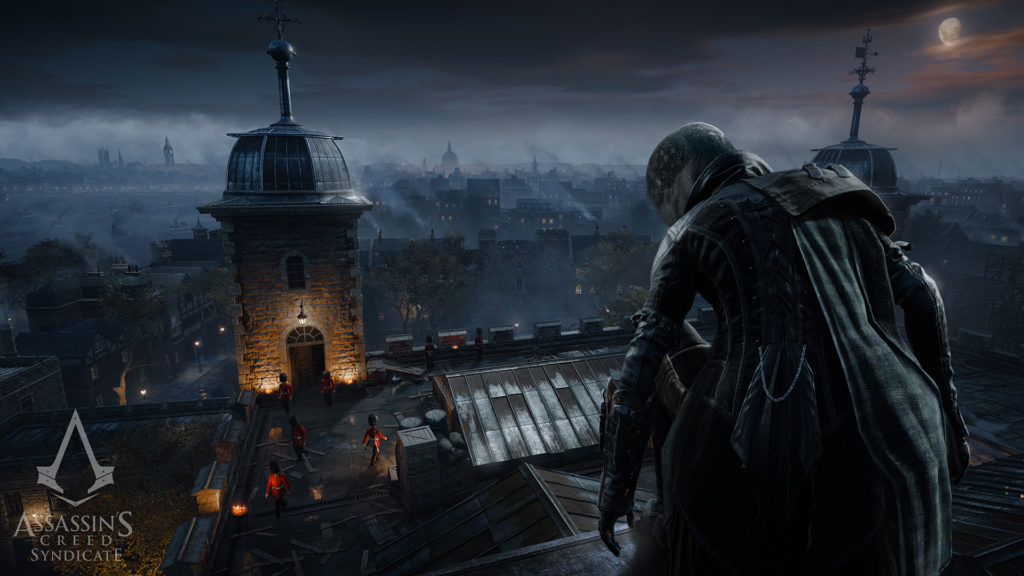
This worked really well as it helped to reinforce the personalities of the different boroughs in the game.
The planning of the source music was very important, we did a lot of research into the era and we worked with a professor of music in the UK, Professor Derek Scott, who supplied us with information like; what the most popular tracks of this era and this year were, or what kind of music was listened to in different places and by different classes.
Listening to the source music and deciding which songs worked best in which borough lead us to which songs we would feature as a theme in each district, and then Austin wove these themes beautifully into the score. So for example, you are on a roof top in the City of London borough and you hear Austin’s music with the refrain of Champagne Charlie running through it.
Austin wrote the music as suites, as you play through the game you progress to the next suite, highlighting different instruments of instrumentation to support the changes in the story line and the characters.
He took the cello for Evie and the Violin for Jacob and used these instruments to underscore the action differently depending on which character you were playing as.
The combat music and the mission music changes as you progress through the game and changes based on which character you are playing. Austin drew on music themes from the time but without there being a feeling of pastiche.
There is an incredible energy and vitality to the score. It really is a character in the game.
We also wrote six original songs for the game. We called these murder ballads as they are written about the major assassination targets.
Murder ballads are a genre of music that has origins in folk music. Songs were written about notorious or important people, or moments in history, and these songs were then sung and handed down. The ballad of Sam Hall, which we used as the borough theme for Whitechapel, sits within this genre.
Austin worked with a group called Tripod in Australia who wrote the lyrics. These songs are darkly funny, dramatic, and poignant, and they fit brilliantly with the city and the time period.
With regards to the dialogue, what was the recording and implementation process like?
We had a large team and we divided up the work depending on the kind of speech being spoken. We had a team working on AI, a team working on the mission scripts, and one on the ‘Crowd life’.
Getting the accent right was a key focus for us. We were very careful with our casting to select native British accents within Canada as well as working with actors in the UK. We worked with dialogue coaches and historians to make sure our diction and text was accurate to the period in order to keep the player immersed in Victorian London at all times.
There are 4 pillars of voice recording that happen for the project. The script and narrative text is primarily recorded in Motion Capture studios with actors interacting in real-time. We record these lines with a boom microphone and try to keep the process as close to a film set as possible in order to get the most amount of emotion and drama from each scene.
AI and gameplay lines are recorded in isolated sound booths, and we need to pay careful attention to the projection and intonation of each line to make sure that the final voice will feel natural within its intended environment. Script writers and voice designers consult regularly to compare notes and assure that the actors have all the information they need to deliver their lines.
Crowd life is an extremely important ambience feature which gives life to the setting. Shipyards, marketplaces, palace balls, are all carefully decorated with people doing and saying things representative of life in Victorian London. In these situations the animations are carefully blocked out in advance and scriptwriters work with the image to write appropriate dialog. The actors similarly must match their voice to the image and work with the video in the sound studio where they record.
Finally a Walla recording session happened in London where we recorded the numerous crowds which appear throughout the game. Walla is improvised chatter which gives life to a busy environment, but doesn’t distract the player from the important dialog happening around them. This happens on a large recording stage with numerous actors present at the same time. We play with microphone placement to simulate various proximities and densities of crowd.
You can hear the Walla of Assassin’s Creed Syndicate on every street corner where NPCs gather. It is controlled systemically in the engine to reflect the amount of people who are in the environment. Special attention was paid to landmarks like train stations, marketplaces and factories to give them each their own special flavour.
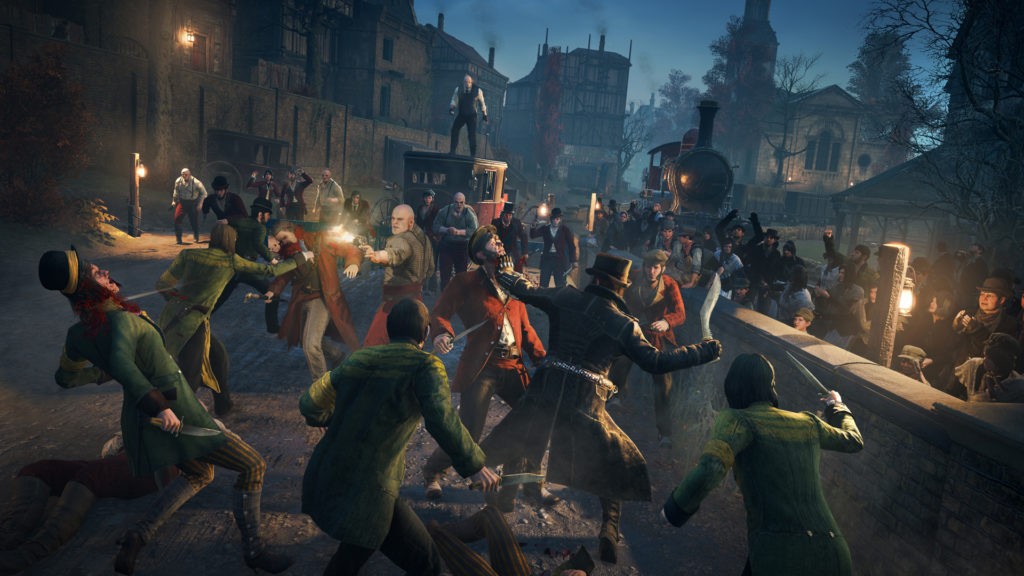
What was it like working with the new combat design and creating sounds for all the new weapons?
Working with the new combat system was a really great opportunity.
We had two player characters, lots of new weapons, and new types of move, so lots of cool creative challenges.
A mixture of guns, knives, range weapons, the sword cane and knuckle dusters/bare knuckles gave us lots of contrasting material and lots of recording to do.
We also had a lot of contextual and context sensitive animations and kills.
Working closely with the animation team is very important. Working through a single set of animations requires multiple steps. Close and ongoing communication is key.
We are dealing with thousands of animations so this level of organisation is very important as we step through the process.
We started by identifying the structure of an animation set and looking at what all the parts of that animation were, every variation, and how they link together is important when considering the sound design.
Once this structure is identified Romain, a sound designer here who was designing the Combat sound system, would work with the animators to make sure we had all the animations we needed, switching at the correct time to allow us to have the sound design functioning correctly. If they weren’t, we might ask for some additional development or granularity in the animation set to help us.
Then Romain would test this system with placeholder sound so we could refine it and plan the sounds we needed to record. This allows us to make sure we get everything we need in our Foley sessions, planning really is important.
Taking videos of the animations to the Foley studio, and screen shots of all the weapons, we could plan all the props we needed in the sessions and focus on not only what the “real” sound of a weapon is, but also what we want to do with it creatively to tell the story of the action or the characters.
Our goal was not to just recreate an idea of the authentic sound of a Kukri knife but also to give this weapon a personality and to support the personality of the character using it, and what their style of movement is like.
Another important element is the vocalisations of the characters and making sure that this matches with the intensity or exertion of the combat. Notes were made for the voice recording team so that they could really direct the actors in a specific way, to help them to understand how these “emotes or effort” vocalisations would be used.
Then it comes to fitting all of this together and making sure that the sounds sit within the image correctly, that the panning, volume, filters are all set, and behaving in a way that makes the fight exciting and readable for the player, and ensuring that they get the best possible feedback.

With the Frye twins, Evie and Jacob, did you focus on particular individual elements to make them stand out? Was there an overall theme, in terms of audio, for each character?
We used music to support Evie and Jacob, but we also used the combat sounds to show the different ways the two characters fought.
Added to this was their navigation sounds, how they moved around the city, the differences in their costumes and in their animation style, and the difference in weight between them. There is a lot of Foley work and original recordings that goes into this. The animation style of the characters is a very important focus for the audio team and we spent a lot of time working with them
The actor’s voices are also very important. Through their movement and combat effort vocalisations, their vocal performance during the missions and in the open world. Paul and Victoria brought Jacob and Evie to life through their voices.
London is a fantastic city, what was it like recreating the ambiences and dealing with the sound design?
It’s such a huge city that we needed it to have an overall life, but to focus on the differences in the boroughs and to create all the small moments you discover as you explore, allowed the player to recognise which borough they were in and help them to navigate around the city.
Lots of elements go towards building up this experience, such as the ambiences and SFX that were created and implemented, the crowd characters that you see walking, chatting, living and working in the city, the source music and musicians, the weather, the vehicles and the mix.
A nice feature for us was that the city had a lot of visual difference. Open parks and narrow alleyways, the river and factories, iconic buildings and great vistas from rooftops.
Here in Quebec, Antoine and Fred did a lot of work on researching the different areas of the city, what happened in real life, and what we would see in the game. This included the kinds of layers of sound we could get into the experience and how this could change based on time of day or the weather.
Again, what was the story we wanted to tell with the sound, what did we want the player to feel and what kind of research and assets would we need?
These conversations and layers included the broad brushstrokes of ambient pads, subtle daytime park ambiences, factory backgrounds or richly reverberant marbled interiors and the detailed SFX that would be attached to specific objects or emitters to create an organic feeling, birds in the trees, ripples in a pond, machines in factories, echoing footsteps, animals, peoples voices coming through a window etc.
We would add sounds and test them, review them and consider them against all the other elements, once the crowd life and AI went in this added lots of diversity and moving layers to the environments. The same with done for the vehicles and the source music. It is a constant process of design and evaluation, ending in the final mix when we pull all of this together.
Overall, do you have a favourite part of the audio for the game that you enjoyed working on the most?
I love how the different boroughs feel like they have a personality, that the voices, the music, the ambiences, the SFX and the crowd animations all work together to provide Whitechapel during the day time and the night time with a distinct feeling. You can feel the ambience of the buildings being so close together and poorly built, the working class voices and music, the reverberance of the alleyways and courtyards. This is in contrast to the open parks and rich marble interiors of Westminster, where you can listen to the birdsong, string quartets, and the upper class voices and the soldier’s shouts whilst performing drills.
These differences are there, I hear them all the time while I am exploring, and I’m very proud of how everything works together. It’s a huge city and I wanted to make sure that it was a dynamic experience rich with contrasts and variety, but that the city and everything within it felt like they were part of the same living and breathing place – Assassins Creed: Syndicates’ London, in 1868.
Thanks again Lydia, it’s been fantastic chatting to you about Assassin’s Creed: Syndicate!
If you want to hear even more about the audio on Assassin’s Creed Syndicate, here is the 16th episode of The Network podcast for Assassin’s Creed, where they chat to Lydia:
We hope you liked our in-depth interview and thanks again to Lydia for such great answers. Check out more at our Interviews page. We also have our Assassin’s Creed: Syndicate review and many more over at our Reviews page.
Enjoy!



